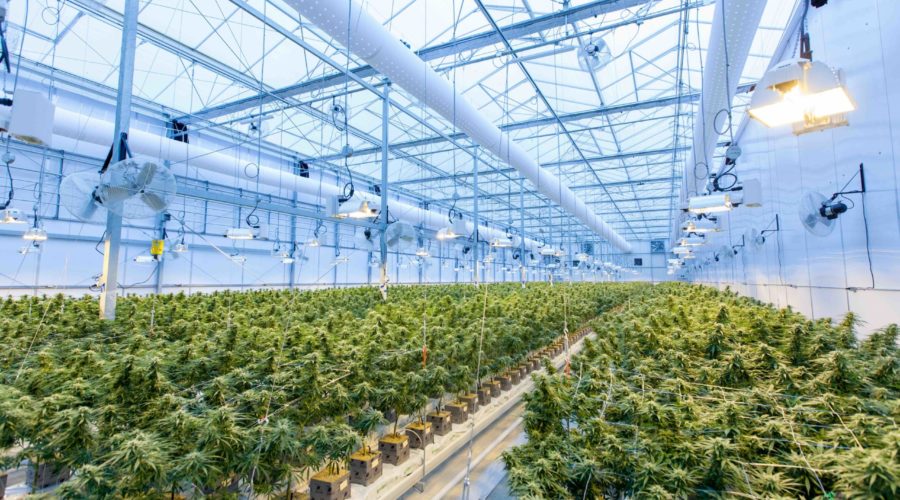Giving the Plant a Voice
By Dr. Gary Yates, Chair, CIC Plant Science Working Group
You might say I’m something of a genetics generalist. After an undergrad degree in genetics and a PhD in molecular interactions (in plant, probiotics and pathogens), I decided to focus on photosynthesis and, eventually, cannabis.
As it transpires, such a varied background of study has come in quite handy when it comes to cannabis cultivation.
Limited research
Over the last two years, I’ve had the chance to break out of the ivory tower and truly establish myself in the field. However, there’s not a whole lot of research and information out there on the subject compared to other species – particularly here in the UK.
It usually takes around 18 months to fully explore a new area of research. By comparison, with cannabis, this part of the process only took two months.
Given the lack of research, it became clear a new wave of study was needed and that’s been my focus ever since. While obtaining funding has been a challenge, we’re now making progress in the right direction.
Policy led by biology
One of the Cannabis Industry Council’s values is to listen to scientific (and medical) expertise. I joined the CIC pretty early on. And in one of my initial meetings, it became clear to me that, while there was clearly a lot of industry expertise in the room, a few hours in, there had been little mention of the plant itself.
It was evident we needed to consider what the plant does – and what its genetic tendencies are – in order to base policy on what biology tells us rather than vice versa.
The plant is a living organism. It can’t be programmed to do exactly what you want it to do. It’s not genetically programmed to present a finished flower. It’s designed to shed seed at different times throughout the season – not all at once in one go. The plant isn’t genetically programmed to be uniform.
That was really the motivation behind starting the group – in order to help inform the other groups based on the science; the parameters we all have to work with.
Challenging misconceptions
Even within the industry there remain many misconceptions about cannabis; which plant science can help mitigate. Perhaps the biggest is the classification of hemp – it’s a complete fabrication. There is no such plant as ‘hemp’ per se.
There are no biological parameters for ‘hemp’ – the DNA sequence is indistinguishable from what we think of as ‘cannabis’. There are some markers, but the terminology used is largely political; it’s a drug policy misnomer from the 60s and 70s.
Another key aspect of cannabis is that it’s also the most reactive plant species I’ve ever studied – in terms of how it responds to its environment. Even the microenvironment – the climatic conditions a plant grows in – can differ from the top to the bottom of the plant.
There are also multiple variances between seeds. In the same way that humans are different from their siblings, so too are cannabis seeds from a single parent plant. However, to manage consistency, you have to look at cultivation techniques. They have as much importance as genetics.
Everything from canopy reach, light levels, to the food plants are given have an impact and can help or hinder uniformity. In fact, you can get higher consistency through cultivation techniques than through genetics alone.
Commercial collaboration
From a commercial standpoint, uniformity is a guarantee of quality and consistency. That’s perhaps why many manufacturers prefer extracts and oils that have already been decarboxylated, as they can offer greater consistency.
However, consumers and patients that want to get the most therapeutic impact from cannabis need to go to the plant itself – both raw cannabis and dry flower. And while cannabis from certain regions does have a certain quality to it – such as Humboldt County in California, where the different cultivars carry certain markers – cannabinoid and terpene consistency remains a moving target.
For example, there’s a tissue culture lab in Canada, that specialises in reverting plants to genetically identical stem cells. In one experiment, the team there propagated 25 identical plants in the same controlled environment, within two sq feet of each other. The expectation was that they would all have the same terpene and cannabinoid makeup. But there was still variation between the chemicals contained in each one.
What I believe we need to do to get a better understanding of this – and I’ve said this before to other council members – what we need is a standard growing area; a place that is indoor, fully controlled, always the same; so that we can judge different types of genetics. In tandem with that, we also need a consistent variety that we can send to different environments.
If we had those two things and a few years’ worth of data, we could really dive down into what the variables are and better understand the impact of location and the effect on genetics.
However, both human and plant biology are unique, and patients need to find a strain that works for them. That’s not necessarily as hard a search as it sounds. In fact, we’ve seen successes in Canada under the microlicense system, which saw growers supplying a select group of medical patients – helping build closer relationships between cultivators and patients, and giving medical users more opportunity to test different strains.
Get involved
Looking to 2023 and beyond, as the CIC attracts new members, I want to make it clear that you don’t need to be a scientist to join the Plant Science Working Group!
As long as you’re keen to stimulate interest in the plant, learn more, and make a difference in how the UK perceives cannabis, you’re welcome to join.
There’s a lot of history around the use of cannabis – but not nearly as much coverage of the plant and how it works, or how it behaves, its biochemistry, and genetics. There’s a lot to explore, and a lot of positive change is possible, so to get involved please reach out!
Dr. Gary Yates is Chair of the Cannabis Industry Council’s (CIC) Plant Science Working Group. A seasoned scientist and seed specialist, he sees it as his duty to make sure the wider cannabis community understands, and has a better grasp of, what the plant needs to continue making a positive impact.
To find out more and to join the CIC Plant Science Working Group, get in contact with Gary on gyates@pharmaseed.io or enquiries@cannabisindustrycouncil.org



